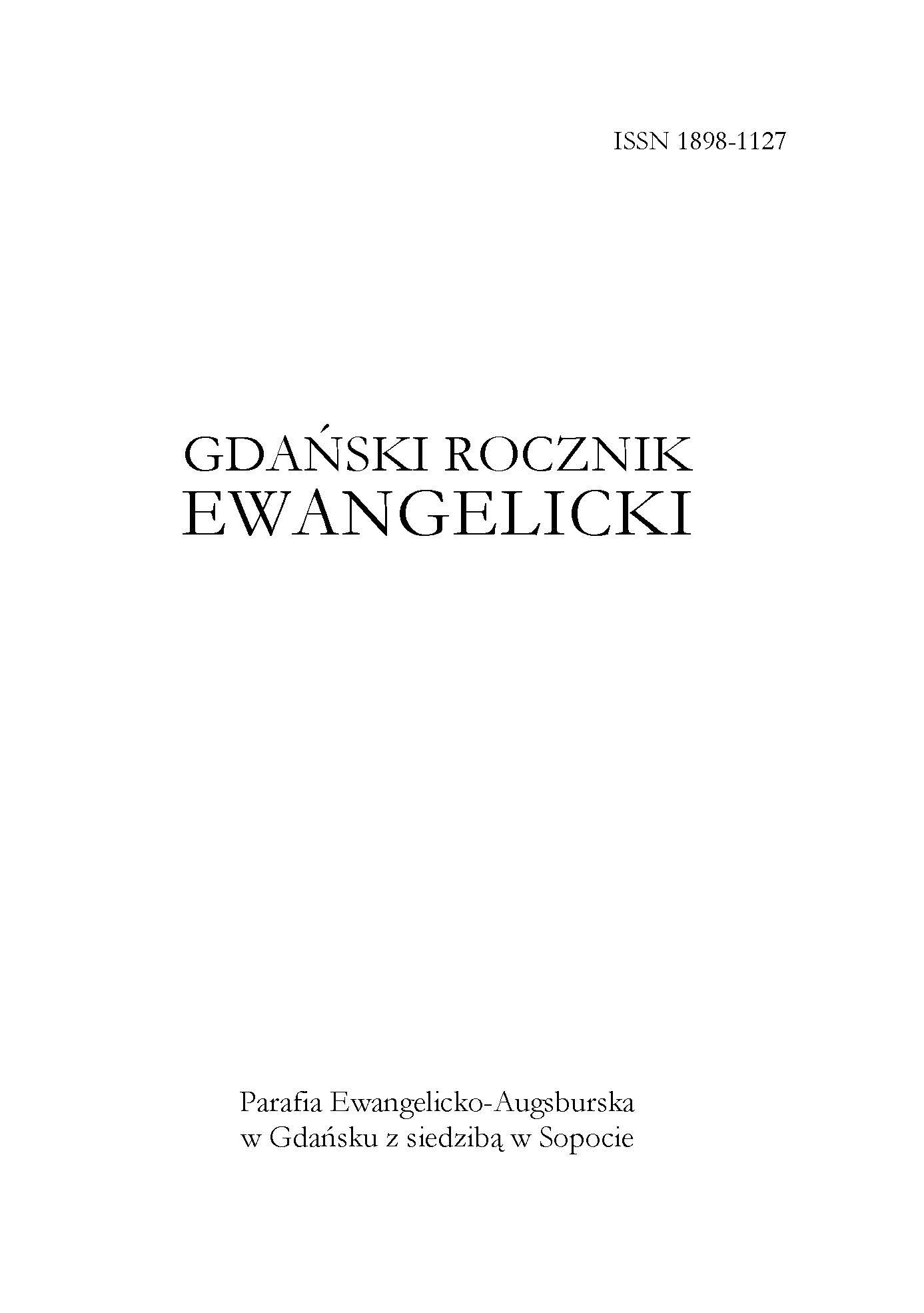
We kindly inform you that, as long as the subject affiliation of our 300.000+ articles is in progress, you might get unsufficient or no results on your third level or second level search. In this case, please broaden your search criteria.


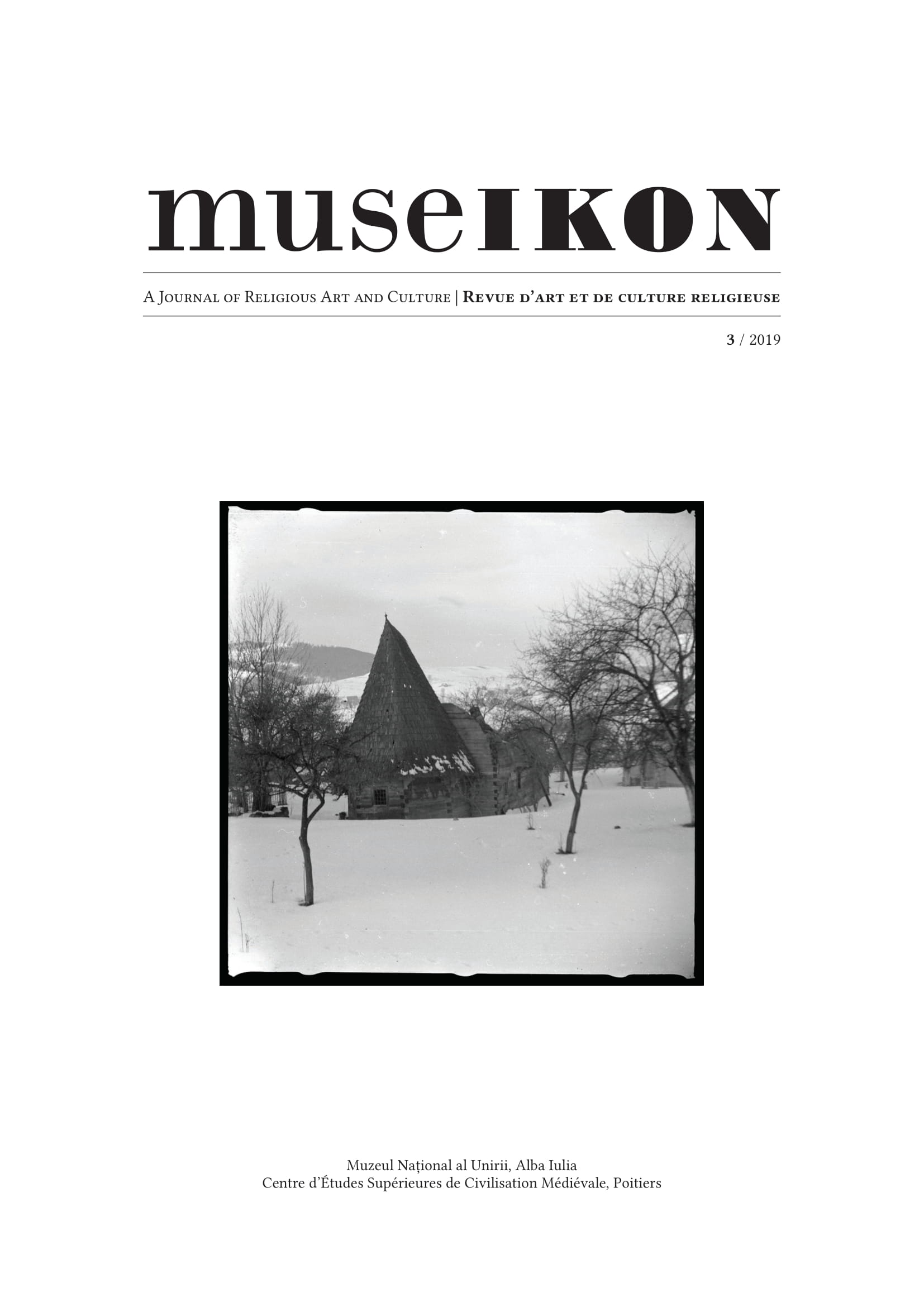
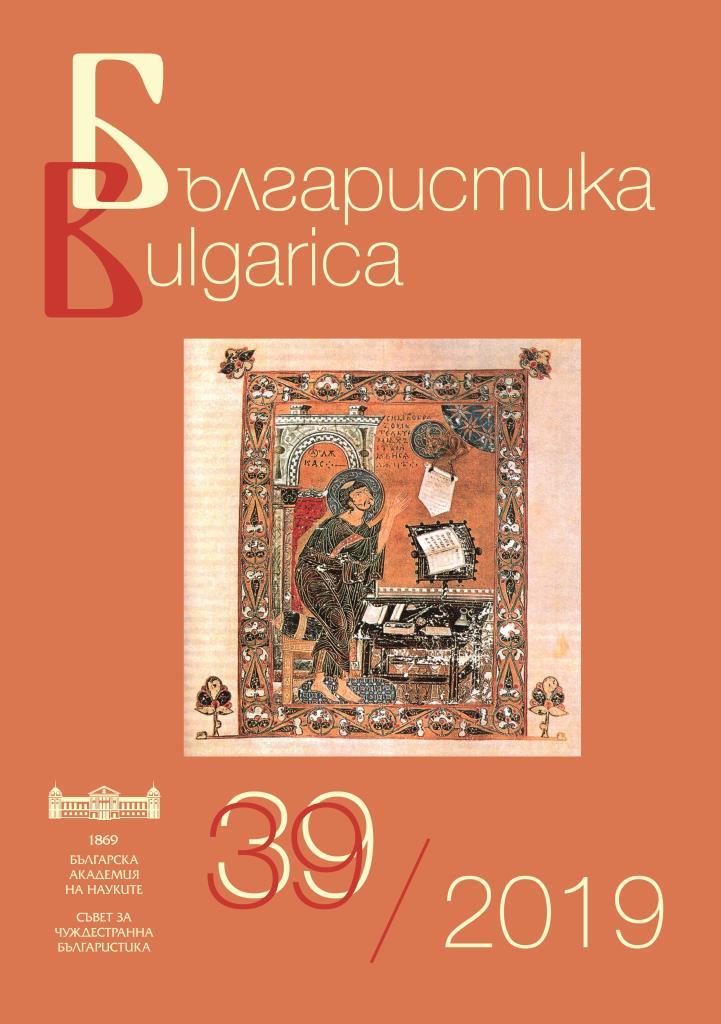
Defended PhD theses in Bulgaria in the field of linguistics, literature, history, folklore, ethnography and art studies.
More...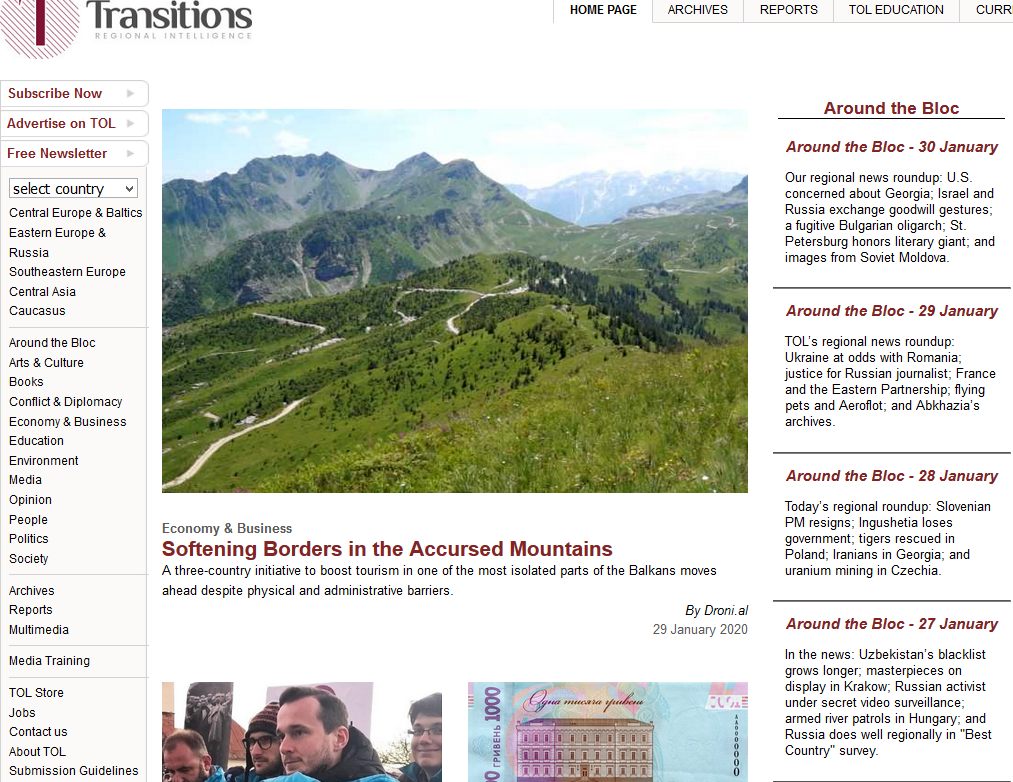
Headlines from around the region: traditions, modernity and outrage in the Caucasus; Poland and a Jewish museum; you say Romanian, I say Moldovan; three Russian sisters; and Armenians in Turkey.
More...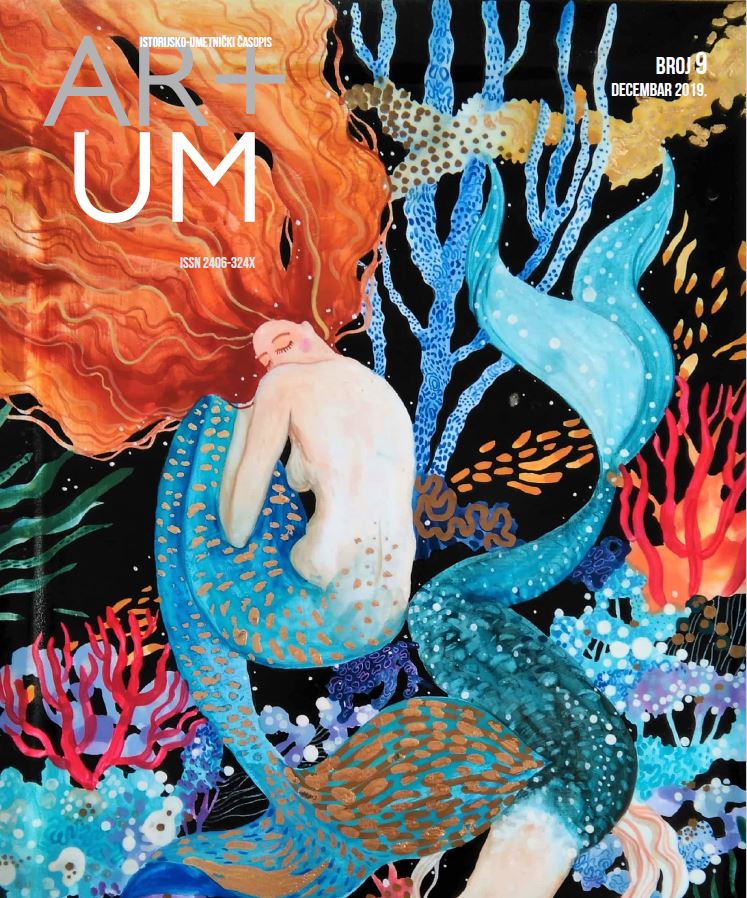
Tema ovog rada tiče se arhitektonske transformacije grada Rima i prihvatanje helenističkih tekovina u arhitekturi u vreme diktature Julija Cezara, a na primeru izgradnje Cezarovog foruma. Proširenje foruma, kao najznačajnijeg društvenog, političkog i kulturnog centra grada Rima, predstavlјa značajan korak u njegovoj graditelјskoj transformaciji. Arhitektonski, Cezarov forum je prostor ograđen tremovima sa korinstskim stubovima, Cezarovom konjaničkom statuom i hramom Venere Pramajke, koja se tradicionalno vezuje za rod Julijevske dinastije. Julijev forum je ujedno predstavlјao odraz Cezarovog političkog uspona i gotovo kultnog statusa stečenog u toku i nakon građanskog rata. Po njegovom uzoru, potonji rimski carevi gradili su forume zasnovane na sličnoj aritektonskoj i ideološkoj koncepciji.
More...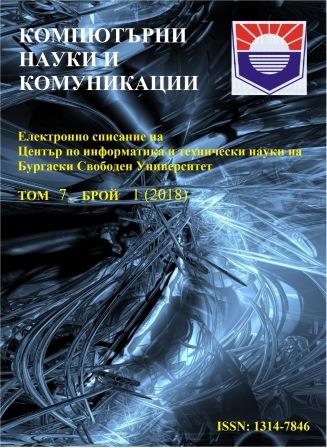
The paper presents different approaches of preserving valuable historical data using modern technologies. The IoT paradigm can easily be applied to the field of cultural and historical heritage. Static cultural places can greatly benefit popularity from intelligent objects, sensors, applications and services. Software architecture of an innovative tourist guide is presented
More...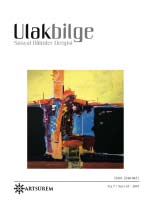
The roots of "surveillance", one of the most important tools of the governments for centuries, date back to very old times. Its major impacts, however, have begun to be deeply felt in modern times. Parallel to the development of nationstates and large-scale bureaucratic organizations in particular, surveillance has also become widespread. In the twentyfirst century, contemporary metropolises are exposed to a constant visual electronic surveillance under the name of security and public safety. In this context, we all are now constantly being watched in public spaces by invisible audiences behind MOBESE cameras. The basis of this system which proposes the control of society by force is based on Jeremy Bentham's Panopticon design. Today, Bentham's eighteenth-century design, Panopticon, is now intertwined with urban scales and replaced with electronic surveillance cameras. The surveillance towers and guards at Panopticon correspond to the central control rooms and the cameras, respectively. The ordinary citizen is being watched through cameras by invisible guards; but the observers are made invisible. Artists have responded to the aspirations of public surveillance by means of their works of art as well. In this article surveillance that's changed gradually in terms of physically and dimensionally which has all the way changed our physical and social life up to the present time, and the aspects are analyzed along with the related works of selected examples of arts so far.
More...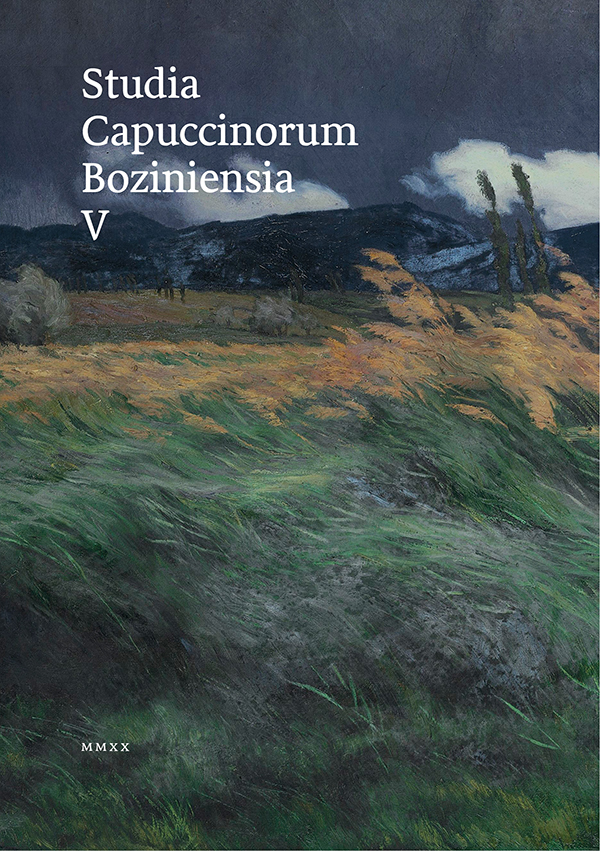
Slovak translation of De institutione musica (I,1-14) from Boethius.
More...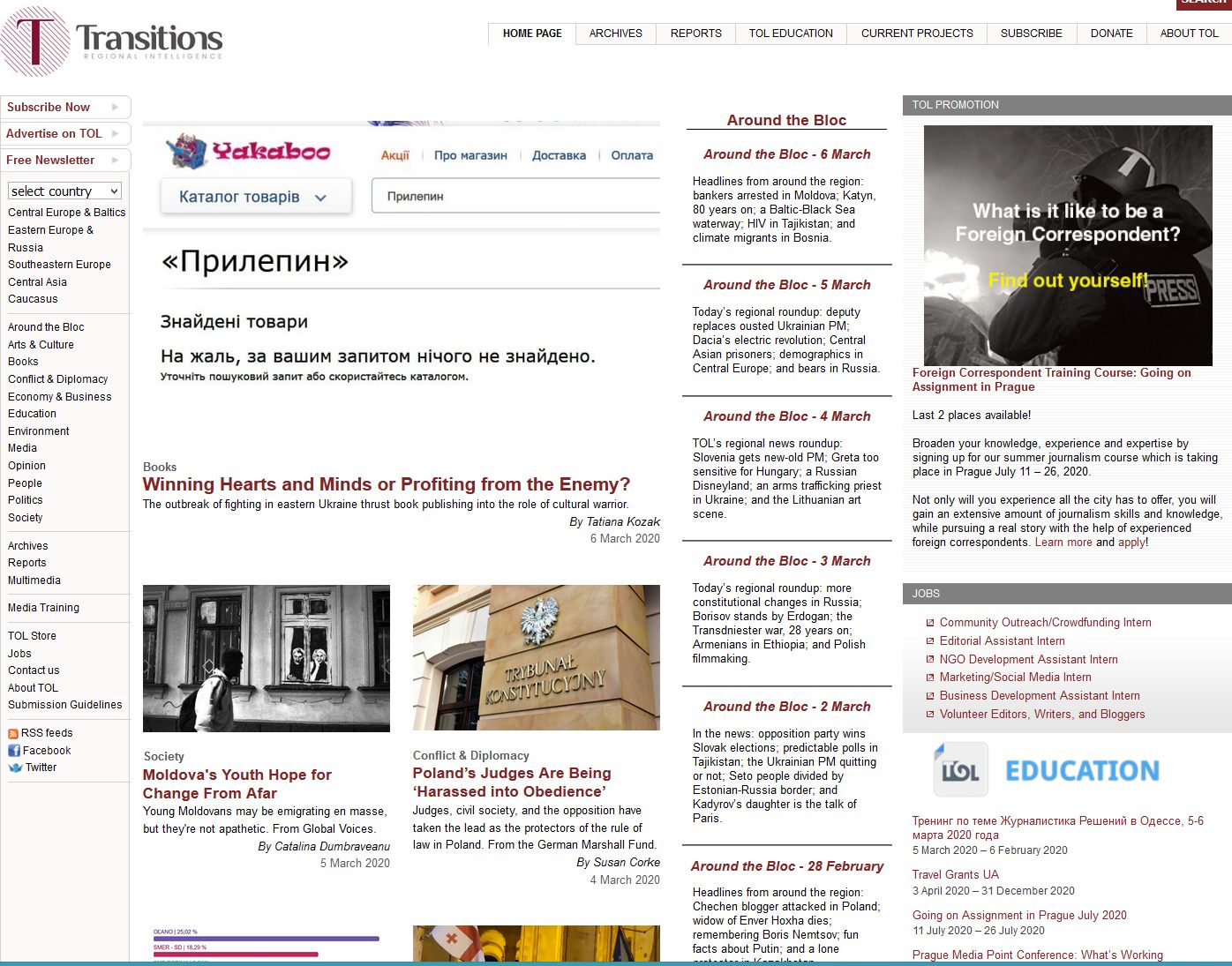
Transitions Online-Around the Bloc-3 MarchToday’s regional roundup: more constitutional changes in Russia; Borisov stands by Erdogan; the Transdniester war, 28 years on; Armenians in Ethiopia; and Polish filmmaking.
More...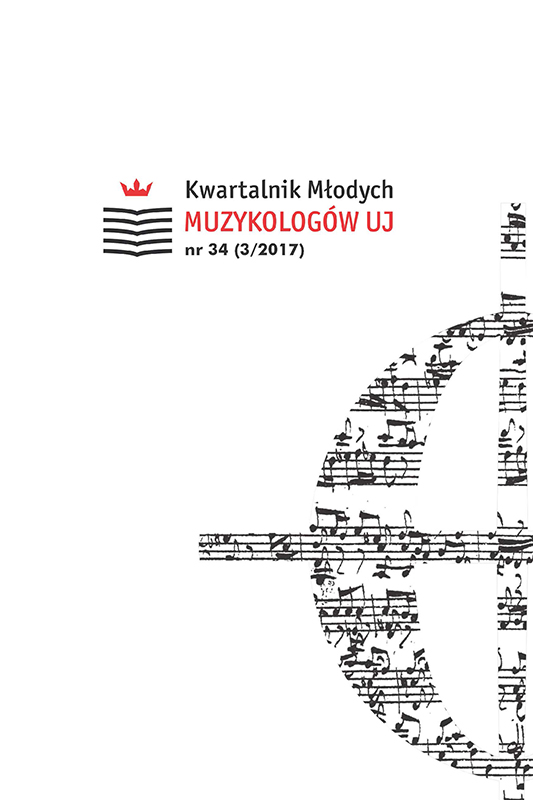
Three musical adaptations of the myth of Phaedra, in which the wife of King Theseus of Athens desperately falls in love with her stepson Hippolytus, were composed in the second half of the twentieth century by three homosexual composers: the dramatic cantata Phaedra for mezzosoprano and small orchestra (1976) by Benjamin Britten (1913-1976) after a text by the American poet Robert Lowell, the opera Le Racine: pianobar pour Phèdre (1980) by Sylvano Bussotti (1931-) after a libretto drafted by the composer himself and consisting of a prologue, three acts, and an intermezzo, and, last but not least, the two-act concert opera Phaedra (2007) by Hans Werner Henze (1926-2012) after a libretto by the German poet Christian Lehnert. The aim of this paper is to prove that the three homosexual composers chose a myth about an incestuous—and thus censored—love in order to represent homoerotic desire, labelled as deviant by the coeval heteronormative society and hence condemned by it. The study sheds light on the aspects of the most famous literary elaborations that affect gay sensibility, and on how the three composers experienced their homosexuality and gave utterance to it in their other works. The analysis of the three works at issue demonstrates that the discourse about gayness takes shape through the interplay of numerous aspects. The elaboration of the literary sources, the organization of the libretto, the characters’ definition, and the mise-en-scène, together with the music, put the myth into that perspective.
More...
The purpose of my paper is to reveal the main features of the mystery genre in the European musical culture of the 19th and the 20th century on the basis of the genre features established in the Antiquity and the Middle Ages.The mystery play genre, as we know, in essence means the firm unity of certain stable features. The complexity of those features consists of two specific elements—religion and social, and a general one—the model of the world for a certain epoch.If in the mysteries of Ancient civilizations and the Middle Ages, the aforementioned components operated as a firm unity of inseparable elements; later, in the period after the “new times”, especially at the end of the 19th century and in the 20th century, the stable elements were disintegrated from each other. This process is discussed on the examples of the following operas:• The common religion and ethical model—Wagner’s Parsifal;• The code of moral rules and principles in the social context—Schoenberg’s Moses und Aron;• The explication of Thomistic ideas in the modern world—Messiaen’s Saint François d’Assise.What is outlined is the unity of necessary components of the genre of the mystery play: multidimensional sources of libretto; a mission of the main hero; the author’s interpretation of the mystery; the abundance of ritual scenes; the relationship between the internal and externaldramaturgical processes; synthesis of the different theatrical genres; static dramaturgy. All of these features suggest a specific type of musical main mystic spheres: divine, terrestrial and demonic. Consequently, the dramaturgy of opera staging has three levels of activity: superficial, inner and upon time.
More...
The article discusses the issue of Jewish musicians’ identity by the example of prewar Galician artists. It emphasizes the role of social and political divisions within Jewish community and the impact of assimilation, liberalism, socialism and Zionism on the musical life of Jews in Galicia. Then, it discusses their influence on individual musicians like: Bronisław Gimpel, Bronisław Huberman, Józef Koffler, Stanisław Lipski, Wilhelm Mantel, Paweł Anhalt, Stefan Schleichkorn, Henryk Guensberg, Józef Neger, Henryk Apte, Izaak Lust, Zofia Lissa, Mordechaj Gebirtig, Nachum Sternheim and musicians active on the stage of popular music. Its aim is to encourage musicologists to reconsider the issue of prewar Jewish musicians’ identity and to use findings of historians and sociologists in musicological literature. They indicate rather complexity, not unilaterality, of the self-identification of Jews in diaspora. Understanding of the Jewish musicians’ work conditions allows to discover the hidden meaning of their actions.
More...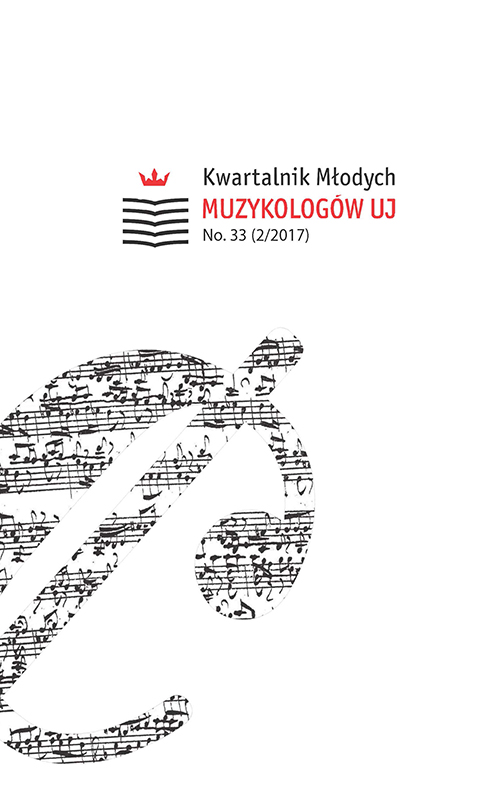
The aim of this article is to interpret songs by Gabriel Fauré, Claude Debussy, Maurice Ravel and a less-known composer—Irena Wieniawska (1879−1932), based on the same poems by Paul Verlaine. In the first part of this paper, the relationships between Wieniawska, Fauré, Debussy, Ravel and Verlaine are subsequently described. Then, the author makes a comparison between selected songs by French composers and Madame Poldowski, indicating main similarities and differences. The final part consists of some remarks related to the fact that Wieniawska fulfills features of the French mélodie very strictly. This is why her songs seem to be more traditional, not as allusive and sophisticated as Debussy’s or Ravel’s vocal works.
More...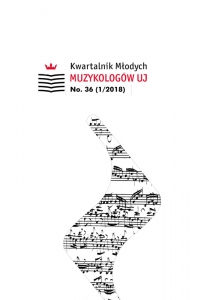
The history of the organs in the Cistercian Abbey in Kraków-Mogiła has not been studied so far. The article elaborates this topic based on the results of an archival query. Most of the sources are preserved in the Cistercian Archive in Mogiła. Examining them, the author discusses the history of instruments in the monastic church and in the former St Bartholomew church. On the basis of the sources, it was stated that at least in the 18th century the monastery church was equipped with two pipe organs. This fact has not been pointed out so far by researchers. The following article is supplemented by archival photographs.
More...
The Archive of St Joseph’s Convent in Kraków contains a collection of musical manuscripts, which have not been studied before. Among books of liturgical use, such as graduals and antiphonaries, there are also small cantionales, full of canto fratto repertoire. The majority of these sources originate from the Convent of Bernardine Nuns in Kraków; however, there are also at least two manuscripts from the Convent in Wilno. The aim of this paper is to present canto fratto repertoire of Benedicamus Domino found in the 18th and 19th century liturgical manuscripts from the Convent of Bernardine Nuns in Kraków. The author indicates sources of studied melodies based on the wide range of liturgical manuscripts from the 18th and 19th centuries—especially from convents of Bernardine Nuns in Poland, as well as from the Convent of Benedictine Friars in Staniątki—and compares it to the dispersal of canto fratto settings of ordinarium missae. Finally, the paper presents complete index of Benedicamus Domino melodies in the annex.
More...
Infant prodigies were a common phenomenon in the 19th century. They astonished the audience not only through their impressive abilities, but also the innocent beauty and the youthful grace. The perfect example of this is Apolinary Kątski (1826–1879), a violin virtuoso and a composer, known mainly as the founder of the Institute of Music in Warsaw, who, since he was three, was recognizable in concert halls all over Europe.According to the author, the early stage of the violinist’s activity requires more attention. The presented article sketches the path of young Apolinary’s life from the moment of his first performance in 1829 to May 1838, when he was granted with the famous recommendation of Niccolò Paganini. It introduced him to numerous concert halls of Europe and positively influenced his further artistic activity. The hereby presented paper makes an attempt to find out the date and place of birth of Kątski in the context of the rich musical activity of his family members. It also shows the first artistic tours of the young virtuoso against the background of his artistically talented siblings: a violinist Karol, pianists Stanisław and Antoni, and a singer Eugenia. The crucial moment are reflections on the stay of the family in Paris and their first performances in the musical centre of Europe as well as contacts of the young violinist with Niccolò Paganini.The studies on the correspondence of the father of the virtuoso, Grzegorz Kątski, and research on the foreign newspapers let the author reconstruct the life of Apolinary Kątski in the very first stage of his musical activity and place him in the context of infant prodigies of the 18th and 19th centuries.
More...
The main aim of this paper is to examine the discourse on Frédéric Chopin that took place in Poland in 1949, when the 100th anniversary of his birth coincided with the culmination of the socialist realist propaganda in the field of Polish culture. The discourse, initiated and moderated under effective surveillance of the Polish People’s Republic’s government, was filled with communist ideology. The authorities aimed at creating a sense of communion in the Polish nation, therefore they undertook numerous actions in the area of cultivating memory of Chopin and reception of his works. The composer was used as a banner under which the culture of socialist realism was to be consolidated. Chopin was presented by the narrators in the socialist realist context in various dimensions.“Deep humanism”, “truth”, “optimism”, “sincerity” and “democratic features” of Chopin’s music were the crucial notions used by them. Chopin was depicted, among others, as a revolutionist and a prophet of triumph of communism. The oeuvre of Chopin was said to bring together “fraternal countries and nations”, Polish People’s Republic and Soviet Union, while being simultaneously a crucial element of class conflict. The authorities had a tendency to overemphasize folk roots of his compositions, thus among musical genres composed by Chopin the importance of Mazurka was exaggerated. Other genres without such strong folk connotations, as sonatas, ballades and scherzos, were marginalized in the discourse.
More...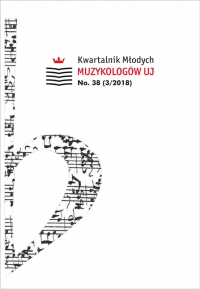
This article explores the newly discovered account books of the Lviv Uniate Musical Chapel of the Bishop Leon Szeptycki. The main stay of this musical chapel was the architectural complex of the Cathedral of St George in Lviv. Today, two account books are stored in the department of old books and manuscripts of the Andrey Sheptytsky National Museum in Lviv in the archives of the Lviv bishops; they cover the years 1760–1779. In the first two parts of the article, the author investigates the issues of the founding of the musical chapel and its place of activity. In the third part, there is a list of musicians who were members of this chapel over the years. In addition to the names and surnames, their positions, years of employment, musical instruments which they played and details of their biography are indicated. In the next part, there is a list of pupils of the chapel. It appears that the total number of pupils ranged from 2 to 14. Adult musicians and pupils played various instruments: harpsichord (“klawicymbaly”), clavichord (“klawikort”), organ, violin, alto, viola da gamba (“kwartviola”), cello (“basetla”), oboe, bassoon, trumpet and horn; there were singers as well. In the fifth part, the author specifies in what way the Lviv Uniate musical chapel was financed. In the next part, both the church and the secular musical repertoire of the musical chapel are described. In this section, also information from the Warsaw periodicals are used. In the seventh part, the collaboration of the Uniate music chapel with other chapels and monastic orders, Jesuits, Dominicans and Conventual Franciscans is explored. In the last part, the author examines the information about the human settlements that are found on the pages of the account books.
More...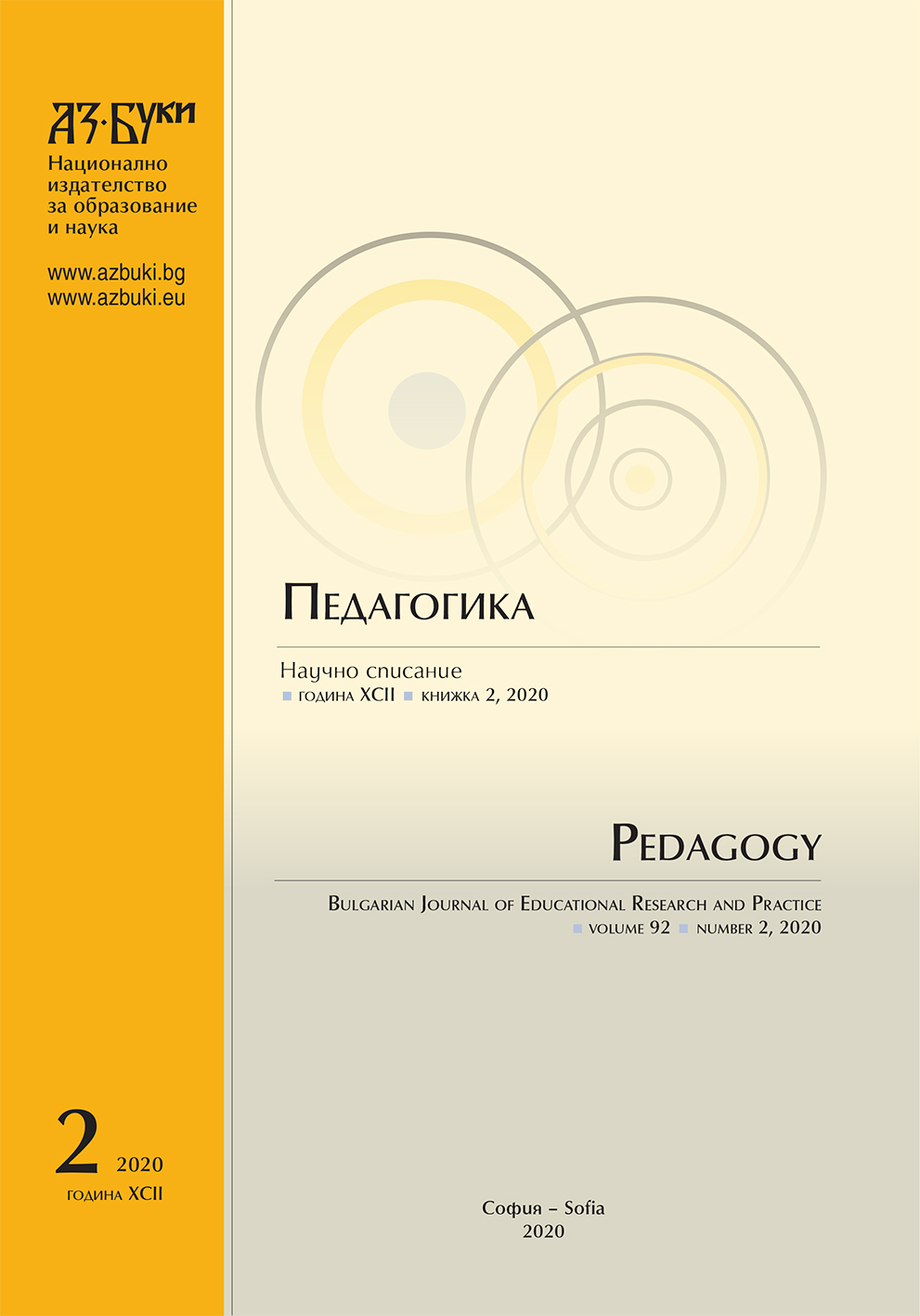
The article presents modelling as a type of visual activity, in three main dimensions. According to the First Class Fine Arts curriculum, the student's individual needs and creative development are emphasized through the sensory systems. The expression of ideas and experiences, by means of visual means to the students of the first grade, covers a large part of the educational content in the fine arts. The modelling activity is analyzed. The necessity of practical application of the volume-plastic imaging to the students in the initial stage was established. This is considered to be an important point in the overall development of their visual skills. A system of assignments is given, the applicability of which enables the enrichment of modelling skills in first grade students. Modelling is a process through which the cognitive processes are refined and developed, which leads to the accumulation of sensory experience and allows the creation of vivid sensory images that actively stimulate their visual activity.
More...